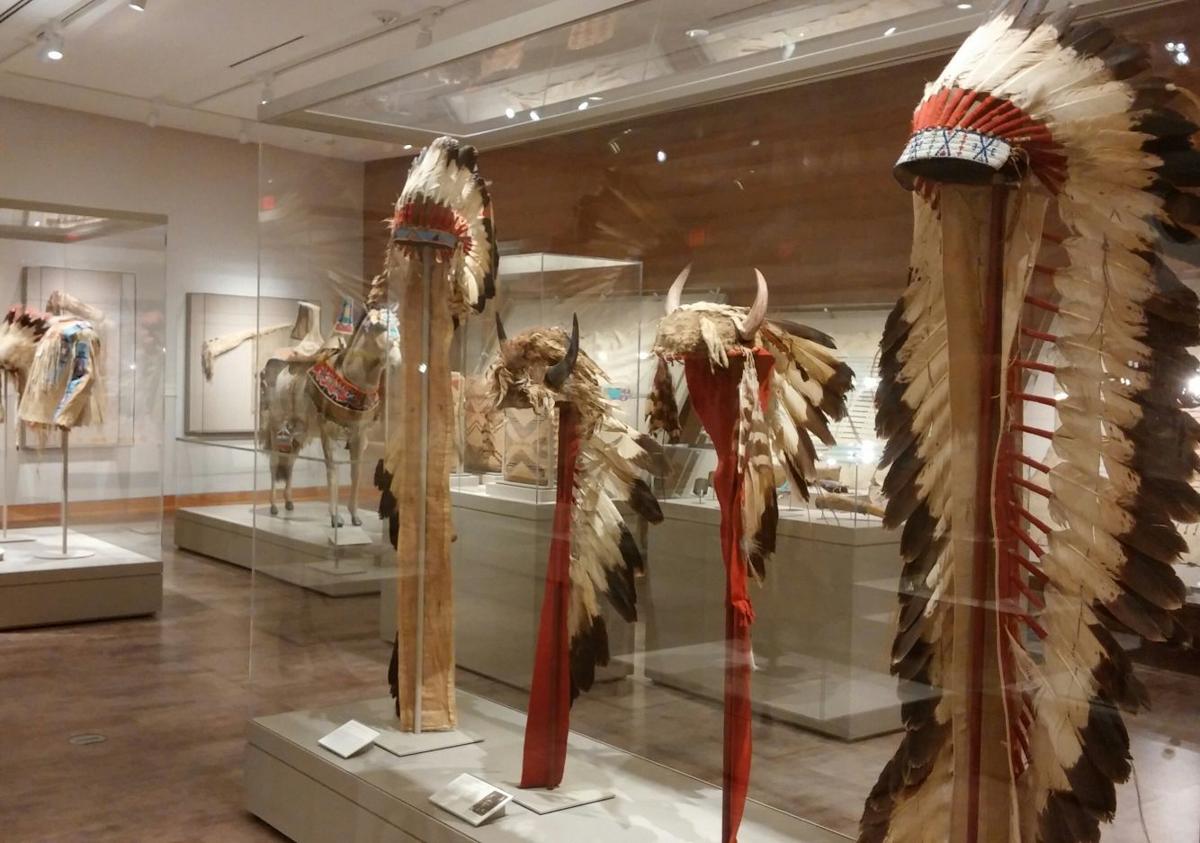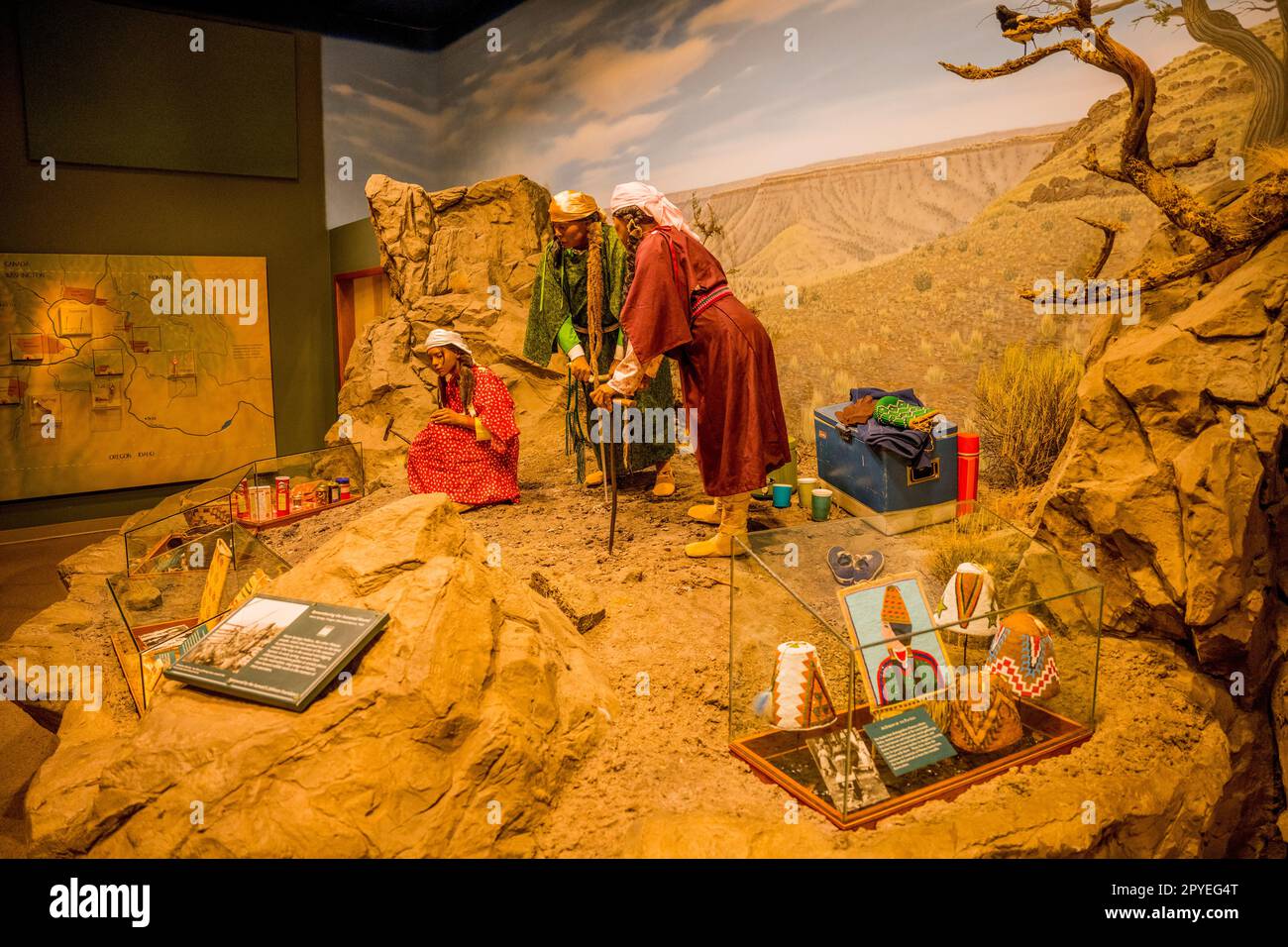
Augmented Reality Experiences for Native American Exhibits: A Deep Dive into Cultural Preservation, Education, and Engagement
Abstract: This article explores the profound potential of Augmented Reality (AR) in transforming Native American exhibits within museums and cultural institutions. Traditional museum displays often struggle to convey the dynamism, living traditions, and complex historical narratives of Indigenous cultures. AR offers an innovative solution by overlaying digital information onto the physical world, enabling immersive, interactive, and contextually rich experiences. This exploration delves into the applications, benefits, technical considerations, and, critically, the ethical imperatives and best practices for implementing AR in a manner that respects cultural sovereignty, promotes authentic representation, and fosters genuine engagement with Native American heritage.
1. Introduction: Bridging the Static and the Dynamic
Museums have long served as custodians of cultural heritage, yet their traditional exhibition methods, often characterized by static artifacts in glass cases accompanied by descriptive text, frequently fall short in conveying the vibrancy and continuity of living cultures. This challenge is particularly acute for Native American exhibits, where millennia of oral traditions, dynamic social structures, and complex spiritual beliefs are often reduced to fragmented historical objects. Augmented Reality (AR) emerges as a transformative technology, offering a powerful paradigm shift in how these narratives are presented. By seamlessly blending digital content—such as 3D models, animations, audio narratives, historical footage, and interactive elements—with the physical environment, AR creates immersive experiences that can reanimate objects, contextualize histories, and facilitate a deeper, more empathetic understanding of Native American cultures. This article will examine AR’s capacity to revolutionize Native American exhibits, emphasizing its role in cultural preservation, educational enrichment, and enhanced visitor engagement, while underscoring the indispensable need for ethical implementation rooted in community collaboration.

2. The Imperative for Innovation: Beyond Static Displays
The limitations of conventional museum exhibits in representing Native American cultures are multifaceted. Artifacts, divorced from their original contexts, often lose their functional, spiritual, or ceremonial significance. Text panels, while informative, can be didactic and fail to convey the nuance of oral histories, the fluidity of language, or the lived experiences of Indigenous peoples. Furthermore, many historical exhibits inadvertently perpetuate stereotypes or present Native cultures as relics of the past, rather than as vibrant, evolving contemporary societies. This static representation can inadvertently reinforce colonial narratives and distance visitors from the true complexity and resilience of Indigenous communities.
AR directly addresses these shortcomings by offering:
- Dynamic Storytelling: Unlike fixed text, AR can unfold narratives in real-time, allowing visitors to "witness" historical events, listen to creation stories in ancestral languages, or follow the journey of an artifact.
- Contextualization and Reconstruction: AR can digitally reconstruct original environments, demonstrate the use of tools, or illustrate the intricate processes of craft-making, placing artifacts back into their cultural landscape.
- Engagement for Diverse Audiences: Its interactive nature appeals to a broad demographic, particularly younger generations accustomed to digital interfaces, making learning more accessible and compelling.
- Challenging Misconceptions: By providing direct access to Indigenous voices and perspectives, AR can actively dismantle stereotypes and foster a more accurate understanding of Native American identities, histories, and contemporary issues.

3. The Transformative Potential of AR in Native American Exhibits
The application of AR in Native American exhibits spans several key areas, each contributing to a more comprehensive and engaging visitor experience:
3.1. Dynamic Storytelling and Oral Histories
Native American cultures are profoundly rich in oral traditions, including creation myths, historical accounts, ceremonial songs, and personal narratives. AR can transform these intangible assets into tangible, interactive experiences. Imagine an exhibit where pointing a tablet at a traditional dwelling activates an animated scene depicting daily life, complete with spoken dialogues in the ancestral language and English subtitles. Or, an ancient pottery shard could trigger an elder’s voice recounting the lineage of its maker and the stories associated with its designs. This capability allows visitors to not just read about history, but to virtually "experience" it, fostering a deeper emotional connection and understanding of Indigenous worldviews.
3.2. Contextualization and Environmental Reconstruction
Artifacts displayed in isolation often lose their original meaning. AR can digitally reconstruct the environments and contexts from which these objects originated. A stone tool, for instance, could be virtually placed back into a hunting scenario, demonstrating its function and the skill required for its use. A ceremonial mask might be shown within the context of a dance, complete with traditional music and movements, illustrating its spiritual significance and role in community life. This contextualization transforms passive viewing into an active exploration of cultural practices and ecological relationships.
3.3. Language Revitalization and Cultural Immersion
Many Indigenous languages are endangered. AR presents a powerful tool for language revitalization within an educational setting. Exhibit labels could offer audio pronunciations of Native names and terms, or entire narratives could be presented in both the ancestral language and a translation. Visitors could even interact with virtual characters speaking these languages, providing an immersive linguistic experience that highlights the beauty and complexity of Indigenous linguistic diversity. Furthermore, AR can immerse visitors in sensory experiences, such as the sounds of a traditional ceremony, the natural soundscape of a particular ancestral land, or the visual spectacle of historical regalia in motion.
3.4. Enhanced Engagement and Accessibility
AR inherently boosts visitor engagement through its interactive and gamified potential. Younger audiences, in particular, are drawn to technology-driven experiences. AR applications can include virtual scavenger hunts, interactive puzzles related to cultural knowledge, or opportunities to virtually "try on" traditional garments. Beyond engagement, AR can enhance accessibility. Digital overlays can provide information in multiple languages, offer audio descriptions for visually impaired visitors, or present complex information in visually intuitive ways, catering to diverse learning styles and abilities.
3.5. Countering Stereotypes and Fostering Understanding
Perhaps one of AR’s most critical contributions is its capacity to dismantle pervasive stereotypes and present Native American cultures as dynamic, contemporary, and diverse. By giving voice to Indigenous perspectives directly, AR can challenge monolithic representations and showcase the immense cultural variation among tribes. It can highlight the ongoing contributions of Native peoples to art, science, environmental stewardship, and modern society, presenting them not as historical footnotes but as vital contributors to the present and future.
4. Technical Frameworks and Implementation
Implementing AR in museum exhibits involves several technical considerations:
4.1. AR Technologies and Hardware
AR experiences typically rely on hardware such as smartphones, tablets, or dedicated AR headsets (e.g., Microsoft HoloLens, Magic Leap). The choice of hardware often dictates the user experience and the complexity of the AR application. Software platforms like Unity or Unreal Engine, combined with AR SDKs (e.g., ARKit for iOS, ARCore for Android), are commonly used for development. Marker-based AR uses specific images or objects to trigger digital content, while markerless AR utilizes environmental scanning (SLAM technology) to place virtual objects within the physical space. Location-based AR uses GPS and compass data, often for outdoor exhibits or historical walking tours.
4.2. Content Creation and Data Integration
The success of AR lies in its content. This involves:
- 3D Modeling and Animation: Creating realistic digital replicas of artifacts, environments, or characters.
- Audio Production: Recording oral histories, traditional music, and ambient soundscapes.
- Video Integration: Incorporating archival footage, contemporary interviews, or performance art.
- Historical Data: Integrating archaeological findings, ethnographical research, and primary source documents.
- Indigenous Knowledge: Crucially, the content must be developed in close consultation with Native American communities, ensuring accuracy, cultural sensitivity, and authentic representation.
5. Ethical Considerations and Best Practices: A Foundation of Respect
The deployment of AR in Native American exhibits is not merely a technological endeavor; it is a profoundly ethical one. Given the historical context of colonialism, misrepresentation, and appropriation within museum practices, a commitment to ethical principles is paramount.
5.1. Authenticity, Accuracy, and Representation
All AR content must be rigorously vetted for authenticity and accuracy by the Native American communities it represents. This includes precise historical details, correct linguistic usage, and appropriate visual and auditory representations. The goal is to present nuanced, respectful, and self-determined narratives, avoiding generalizations or perpetuating harmful stereotypes.
5.2. Community Collaboration and Cultural Protocols
The most critical best practice is deep, sustained collaboration with Native American elders, artists, scholars, and tribal governments from the project’s inception through its completion and ongoing maintenance. This is not mere consultation but co-creation, ensuring that Indigenous voices are central to content development, narrative control, and interpretive decisions. Respect for cultural protocols, including those related to sacred objects, intellectual property, and restricted knowledge, must guide every aspect of the AR experience.
5.3. Intellectual Property and Data Sovereignty
Questions of intellectual property (IP) for digital content, especially when derived from traditional knowledge or sacred narratives, are complex. Agreements must clearly define ownership, usage rights, and revenue sharing (if applicable). Furthermore, data sovereignty—the right of Indigenous nations to govern the collection, ownership, and application of their data—must be respected. This ensures that digital representations of cultural heritage remain under the control of the originating communities.
5.4. Accessibility and Inclusivity
While AR enhances accessibility, it also introduces potential barriers. Museums must consider the digital divide, ensuring that AR experiences are accessible to all visitors, including those without personal devices or with varying levels of technological literacy. Providing museum-owned devices, clear instructions, and alternative non-digital pathways to information are essential.
6. Challenges and Limitations
Despite its immense potential, AR implementation faces several challenges:
- Cost and Technical Expertise: Developing sophisticated AR experiences is expensive, requiring specialized skills in 3D modeling, animation, programming, and historical research.
- Hardware Accessibility and Maintenance: Maintaining a fleet of AR-enabled devices can be logistically challenging and costly. User adoption can also be an issue if the technology is unfamiliar or cumbersome.
- User Experience Design: A poorly designed AR experience can be distracting or frustrating, detracting from the exhibit rather than enhancing it.
- Longevity and Updates: Technology evolves rapidly. AR exhibits require ongoing maintenance and updates to remain relevant and functional.
- Potential for Distraction: Over-reliance on flashy AR elements can sometimes overshadow the physical artifacts and the deeper cultural messages. A careful balance is crucial.
7. Future Trajectories
The future of AR in Native American exhibits is promising, driven by advancements in technology and a growing recognition of its ethical imperative. As AR hardware becomes more ubiquitous, powerful, and discreet (e.g., lightweight AR glasses), the experiences will become even more seamless and intuitive. Integration with artificial intelligence (AI) could enable more personalized and responsive narratives, while combinations with Virtual Reality (VR) and Mixed Reality (MR) could lead to fully immersive cultural environments. The emphasis will increasingly shift towards creating collaborative platforms where Native communities can directly author and manage their own AR content, further empowering their voices and ensuring cultural integrity.
8. Conclusion
Augmented Reality offers a revolutionary pathway for museums to present Native American exhibits in a manner that is both deeply informative and profoundly engaging. By transforming static displays into dynamic, interactive portals, AR can reanimate history, preserve languages, contextualize artifacts, and foster a more accurate and respectful understanding of Indigenous cultures. However, the true success and ethical legitimacy of AR in this sensitive domain hinge entirely on an unwavering commitment to authentic representation, rigorous historical accuracy, and, most critically, deep, sustained, and respectful collaboration with Native American communities. When implemented thoughtfully and ethically, AR has the power not only to enhance museum experiences but also to serve as a vital tool for cultural revitalization, education, and reconciliation, allowing the rich, living heritage of Native American peoples to resonate powerfully with present and future generations.


